#shop advice
Text
:-“I was just getting my coffee, but then I fell in love with you” Coffee shop love prompts-:
By @me-writes-prompts
Going to order their usual order, but the other one puts their hand up and says, “Usual, right? I got it.”
Smiling and blushing even before they enter the coffee shop, because they were dying to see them again after seeing them for the first time yesterday.
“Hey! Can I have iced tea?” “Hmmm, I know you love tea. But, today, can I get you a coffee that I think you might like?” “Oh, yes!”
Accidentally spilling their coffee on the other on their way out
Ordering the same thing at the same time and then awkwardly laughing
^^”Guess I’m not the only one who likes my black coffee with a touch of vanilla syrup, huh?” “Yeah, weird but good.” “Agreed.”
Locking eyes across the room while they are both sipping their drinks
Having to sit at the same table because there is nowhere else to sit(there was only one table :)
Getting so used to meeting each other everyday for morning coffee that they miss them when they are not there.
^^"Where were you yesterday?" "Oh, I wasn't feeling well. A little under the weather, haha." "Yeah, it was quite cold yesterday. Are you doing better now?" "Yeah, yeah. Thanks for asking." "I…I missed you." "Oh."
#writers on tumblr#prompt list#writeblr#imagine your otp#otp prompts#otp writing#writing prompts#otp#story prompt#dialogue prompts#otp stuff#otp meme#otp tropes#writing inspiration#writing ideas#creative writing#romance prompts#love prompts#soft prompts#fluff prompts#me-writes-prompts#coffee shop au#meet cute#writing#prompts#fluff#enemies to lovers#writing prompt#writing motivation#writing advice
545 notes
·
View notes
Text

art trade skk flower shop au for @thatkarleesidraws :D
AU where they made Dazai go to therapy and now he's working in a flower shop. He knows nothing about flowers or how to care for them and gives terrible advice to his customers.
#sorry i had to make him less Dazai-esque#Chuuya is the same tho#and annoyed by his god aweful advice#art trade#bsd#bungou stray dogs#bsd fanart#bsd garlic#fanart#bungo stray dogs fanart#skk#bsd dazai#dazai osamu#chuuya nakahara#soukoku#chuuya#dazai x chuuya#my art#bsd art#dazai#digital art#bsd chuuya#bsd flower shop au#skk flower shop au#bungo stray dogs
978 notes
·
View notes
Text
How to create an atmosphere: Coffee Shop
Sight
small tables with chairs
decoration
a cozy couch
the counter with the baristas
a big menu on the wall
people standing around, sitting down and going in and out
a dog lying under a table
small children running around
a person waiting for their friend or date
people drinking and eating while typing on their laptops
Hearing
the sound of the coffee machines
clinking of glasses/mugs
the moving of chairs
colleagues talking about their job and tattling about the boss
students frantically searching for this one paper they need right now
friends telling each other about their days
a young parent trying to calm down their crying baby
the barista yelling out names for whoever's coffees are ready
people in line trying to decide what they want to order
an awkward first date at one of the tables and both parties just ask each other weird questions
the sound of typing from the students and some business folks
the continued opening and closing of the front door
the cars and noise from outside when the door opens
Touch
the stickiness of the tables
the warmth of the mugs
the delicious treat eaten by hand
the gush of wind when someone opens the door
Smell
the smell of the coffee beans
the smell of different teas
the smell of fresh pastry
the smell of hand sanitizer
the smell of cleaning products after the tables were wiped down
Taste
coffee
tea
other drinks
fresh pastry
cookies and cakes
More
If you like my blog and want to support me, you can buy me a coffee or become a member! And check out my Instagram! 🥰
#how to create an atmosphere#coffee shop#how to write#writeblr#writers on tumblr#cafe au#writing#writing advice
1K notes
·
View notes
Text
PAID READING SERVICES: Updated
#pap#pac#pick a pile#pick a deck#pick a reading#pick a card#spiritual#spirituality#divination#tarot reading#tarot#reading#readings#channeling#channeled reading#channeled messages#channeled message#tarot readings#shop#love reading#future spouse reading#fs#future spouse#love#advice#spirit guides#tarotblr#manifestation#law of assumption#affirmations
620 notes
·
View notes
Text

"- Good job 'Fei, 'Ro's in another space. I totally lost my boyfriend.
- What about you? Not reading the book I gave you?
- Me? Naaah, I'm a streetrat remember? Gotta maintain the reputation."
I made this for the @gundamzine. I just want them to be fine now.
#Gundam Wing#GW#chang wufei#Heero Yuy#Duo Maxwell#1x2x5#Wufei x Heero x Duo#Coffee Shop AU#Wufei as a librarian#They all went to therapy lmao#Now Wufei own a library café#I totally see him sheltering people in a cosy place and giving them tea and books to make up for their stressful day#He would even listen to them rant sometimes#Giving some pieces of advice here and then#Quatre wants to live there forever#He goes whenever he can and chats with Wufei#Trowa would say to Wufei one day “it's nice to discover the real you behind all that anger”#And Wufei would be like “sush”#“but yeah”#“took me a while”
266 notes
·
View notes
Note
I was reading through the 'writing' tag on your blog, and came across your wonderful post about how you outline your novels using Cherryh's 'Shopping List' technique. My question is - how do you decide/come up with the 10 things in the novel? I have about 3-4 things I know must happen in my idea, and other random details about the world. But what is important enough to be one of the 10 things? And also, how do you generate your ideas for those 10 things?
...Okay, let's take this from the top. (And for convenience's sake, let's stay in the shopping-list idiom; it's useful enough.) (ETA: the blog entry containing the description of the Shopping List outlining method is here.)
Let's say you want to make a cake. ...This cake also being your novel.
To have a solid story (in the western-novel tradition, anyway), you need at least two things: plot and theme. The plot is what happens. The theme is the why of what happens, and (to a certain extent) the spectrum of thought and emotion that underlies that; the answer to the question “But what’s the book about?”* ...Think of this duality, for the moment, as the equivalent of having both liquid and solid stuff in your cake. You’ve got to have both or it won’t rise. A book with a plot but no theme has no soul.
So: you’re going to make a cake. What kind?
As an example, I’m going to ease myself out onto a limb here and equate “chocolate-chip devil’s food with chocolate buttercream frosting” with “epic-fantasy quest fiction with strong political, exoreligious, and quasiromantic components.” (A favorite for me, over time, as some folks will have noticed. I just can’t get enough of those chocolate chips...)
So how do you determine the ten things you need (or whatever number you like, but ten works for me) as major ingredients / sections?
Well, ideally from some familiarity with what has gone in other/similar cakes/works of fiction in the past. If you haven’t been reading in your chosen genre, you should be. This doesn’t mean you have to do what other people working in the genre have done. (Indeed, at all times you remain at liberty to “flip the punchcard” and do exactly the opposite of what everybody else has been doing, if that’s what suits you.) But they’ve set out possible recipes for you, so (as a beginner at this work) examine those recipes and see what’s in them that might be useful for you. Once you’ve been doing this for a while, you don’t need to go looking, just as an experienced baker doesn’t need to run for the recipe book every time they want to make a cake.
Naturally you can substitute ingredients, add some or lose some, when you’re creating something new; just as you like—while always making sure you don’t throw away anything routinely required/expected in your genre. (Such as the Happily Ever After at the end of a genre romance.) But certain basics must be in place, things that make what you’re creating recognizably A Cake, as well as your own additions and embellishments.
In this case, that could be:
For a cake: flour, milk, eggs, butter, baking powder, cocoa, chocolate chips, vanilla extract, seasonings, a little bit of salt (because without that, even the sweetest cake tastes just a little insipid somehow)
For a novel: a protagonist/pairtagonist (is that a word? It is now...), an antagonist (not necessarily a character: an antagonistic or stymie-ing situation that keeps the antagonist from easily getting what they want/need will do just as well. This is where at least some of the interior drama will derive from), a change in interior conditions that sets events in motion, a “ticking clock” or similar construct that means the desired result must be achieved within a certain time or before certain conditions change or expire, various reversals or hiccups in the flow of the story that will inject a sense of realism (because when does anything ever go perfectly smoothly...?), a crisis point at which everything assembled against the protagonist rises up to be dealt with, and the protagonist rises up to meet the challenge and deal with it; and finally a set of resolution events that (even if it doesn’t absolutely finish the story proper) brings about an end state that will leave you, and any theoretical reader, satisfied with the completion of the current story arc.
...Needless to say, this is an incredibly oversimplified take on the kind of strategizing needed when you’re creating the recipe for a novel that won’t simply collapse the minute you take it out of the oven. But starting simple is often best. The more you do this kind of work, the easier it gets.
Now: “How do you generate your ideas for those 10 things?”
There are a lot of possible answers to this, but the simplest is: Make them up out of nothing, as usual. :)
...This isn’t meant to sound like sass. You made up those first three or four things you came up with out of nothing, and now (because they’ve been there for a while, probably) they may well have started to acquire a kind of secret, temporally-based superiority in your mind—starting to feel somehow more valid than what needs to come next to fill in the gaps. This kind of creeping sense of validity-via-temporal-primacy is a commonplace when you’re in mid-process, and I invite you to ignore it.
Just insert those three or four things into your shopping list in (roughly) story-temporal order, and then spend some time thinking about what kinds of events could usefully come between / flow from them. Hints:
Events that could realistically have been caused by the ones you’ve got already, and could also realistically be seen as causal to later ones you’ve already established, are always useful. Ideally, you’re trying to establish a chain of events in which none of them look accidental, or coincidental (because readers are rightfully sensitive to plots that only work because all the characters are idiots, or keep having “lucky accidents”). What you’re working toward is an event flow that seems, when viewed in completion, inevitable: as it if couldn’t have happened any other way. You will almost certainly not achieve this easily, early on in your novel work, and maybe not at all. But it’s what you should be striving for.
Events that badly screw things up for the main characters are also always useful. Heroes do not become heroes by having everything go their way. Their heroism is achieved and manifested by having things go to shit around them again and again and AGAIN, and nonetheless still finding their way through all that shit to do what needs to be done. The lines attributed to the Confucianist philosopher Meng-tse (sometimes written as “Moshi” in Japanese) are a touchstone in this regard:
When Heaven is about to confer
a great office upon a man,
it first exercises his mind with suffering
and his sinews and bones with toil:
it exposes him to poverty
and confounds all his undertakings.
Then it is seen if he is ready.
So put your protagonists through the wringer. This is the greatest service you can do them.
A variant on this theme: Spend a little time thinking, “What is the absolute worst thing that could happen to these characters in this story / in this world?” And when you’ve figured that out, stick it into one of those gaps as a Main Thing—ideally one between the story’s midpoint and its already-planned crisis, if you’ve got that in place—and then start thinking about how to best exploit it to show how terrific your characters can become if you kick them around a bit. (Addendum: you are allowed to have one Absolutely Terrific and Beautiful Thing happen to assist your characters in recovering from this awfulness. Because they deserve it; but also, all invented worlds [if you ask me] should have beautiful things in them—things to long for, things that make your reader wish they could live there. And that you find beautiful, and worth returning to. You are absolutely allowed to keep yourself entertained, and emotionally refreshed, while you’re creating.)
...Anyway, take your time about getting those gaps filled in. It may take a little while: laying down basic story structure is worth not rushing, if you can avoid it. Once you’ve got them all in place, the secondary lists will follow more easily.
HTH!
*This is a hilarious oversimplification, but my job at the moment is not (as the saying goes) to explain the workings of the entire universe while standing on one foot. :)
1K notes
·
View notes
Text

#What to do if Your Barber-Shop Quartet is Programmed For Evil#tips#tricks#life hacks#helpful hints#advice#music#unreality#havoc
394 notes
·
View notes
Text
Kingsnake Shopping List
If you've decided on a kingsnake (Lampropeltis sp.) as a pet snake, you've made an excellent choice! Kingsnakes are known for being fantastic eaters and are very hardy, fun pets who can live to be over 15 years old with proper care.
This guide is intended for California and Mexican black kingsnakes, and it can also work for black, Sinaloan, Nelson's, and Honduran milksnakes.
Enclosure setup shopping list:
You will want to set up your enclosure so your snake has room to stretch out, climb, and explore! You will need to set up a temperature gradient of 85-75 Fahrenheit, and kingsnakes prefer mid-range humidity, about 50-60%.
Enclosure. For a young kingsnake, a 20 gallon is fine, and a 40 gallon works well for yearlings. As an adult, your snake will need a 4x2x2 enclosure at the absolute minimum, and bigger is better! Kingsnakes average around 3-5 feet across species, with males being significantly smaller than females. Check out Animal Plastics for affordable, high-quality enclosures.
If your enclosure has a screen lid, two sets of screen clips. Never bring a snake home without screen clips!
A dome heat lamp with ceramic sockets. Any big reptile brand is fine - Fluker's, Zoo Med, and Exo Terra are all trustworthy brands here. Make sure your dome lamp is rated for the wattage of bulb you will be using - 150 is usually a safe bet.
Heat bulbs. I use ceramic heat emitters for my kings. You can choose to provide halogen light and UVB if you'd like. Arcadia makes high-quality heat sources your pet will love. The wattage you choose will depend on your enclosure size and the temperature in your home.
A thermostat to plug your heat source into. Vivarium Electronics thermostats are excellent but pricey; you can go as expensive as you like but here is a cheap one I swear by.
Digital thermometer/hygrometer reader with probes - Zoo Med and Exo Terra make great dual gauges. Avoid stick-on dials!
At least two identical hides, one on either side. A proper hide has three solid walls and a smallish entrance - you want your snake to feel snug and secure. I recommend extra hides for milksnakes, who can often be more timid than other kings.
A container to make a humidity hide. Simply cut a hole in the lid, fill with damp moss, and you're set! Providing your snake with a humid hide will help them have perfect sheds every time!
A large water bowl
(Insider tip: if you go to the grocery store and buy a pack of black plastic food storage containers, you can easily make hides, humidity hides, and a water bowl out of them! Here's my go-to option, you can easily take care of all that for one baby snake for like 5 dollars!)
Sphagnum moss for your humid hide
Substrate - for kingsnakes, I prefer cypress mulch. It allows for easy burrowing and holds humidity well! Other humidity-retaining substrates, such as coconut husk or coconut fibers, are good choices as well. Whatever you choose, provide your snake with at least a couple inches so they can dig.
Climbing branches and other decor - climbing is a must, and vines, rocks, and tunnels made from cardboard tubes are other great options. Kingsnakes thrive on novel stimulation, and small cardboard boxes and hol-ee roller balls are frequent favorites. Cluttering up your enclosure is a must! Rolled up balls of paper towel can make great clutter for young snakes.
Consider a blanket or other visual barrier to put over the enclosure to help your snake feel safe and hidden. Kingsnakes are visual snakes and babies can feel jumpy and exposed in an all-glass enclosure.
General care:
Feeding tongs.
Food for your snake. Even baby kings can eat whole pinky mice. Your offered food should be about 10% of your snake's body weight. It's easy to overfeed kingsnakes - do not listen when they act like they're constantly hungry! Being fed once a week is plenty for young kingsnakes.
A soldering iron, believe it or not! A cheap soldering iron will serve you well throughout your snake's life - you can use it to easily melt holes in bowls and containers to make hides.
A small snake hook can help you with handling your snake, especially if you're nervous. Kingsnakes have excellent feeding responses and mistaken feeding bites can happen, so handling with a snake hook can help get your snake out of food mode and help you be more comfortable.
And some common beginner mistakes:
Don't move your snake to a separate enclosure to feed. It's a myth that will make your snake "aggressive" - it can actually cause more mistaken feeding bites as they associate handling with being fed!
Don't worry if your snake spends most of their time hiding, especially while young. A hiding snake is a happy snake! Don't be concerned if your pet kingsnake seems flighty and jumpy at first, kingsnakes can be jumpy babies but many become much more confident by the time they're a year old.
Don't over-handle your snake, and always give them at least a week to settle in before offering food for the first time.
Never handle your snake for two days after they've eaten - that could cause a regurgitation.
Kingsnakes are some of my favorite snakes to keep, and I'm sure you'll see why when you bring yours home! They're fun, curious snakes with big personalities, and you never have to worry about them missing a meal!
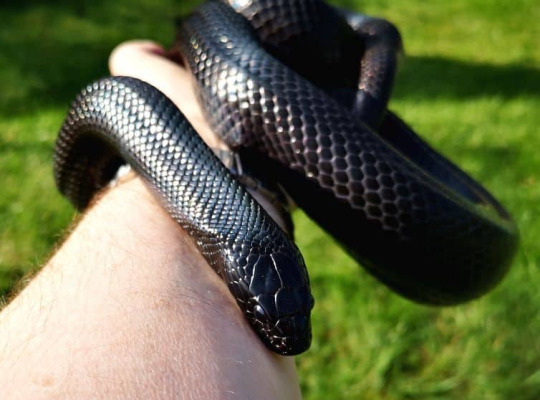
163 notes
·
View notes
Photo
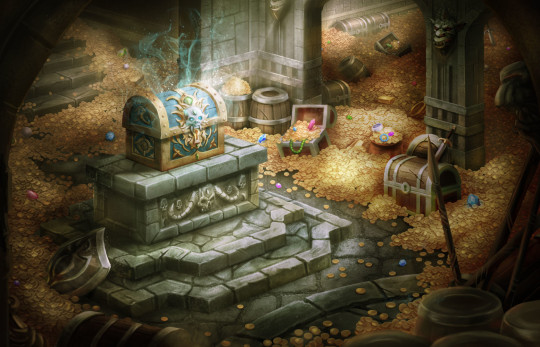
DM Tip: Better Loot
Treasure is ubiquitous in D&D, it’s presumed to be one of the default motivations, if not the only motivation behind many adventures, despite the fact that very little thought has been put into the systems by which the DM generates the treasure and the party plays around with it. After nearly two decades of being a DM I can’t count the number of times I’ve made a treasure horde and handed it out to the players while feeling as if the fun game we had been playing had suddenly been put on pause.
It took me a while to realize that this was because unlike combat ( the favourite child among d&d’s many subsystems) very little attention had been made to making loot feel good at any stage of the process whether it was down to the mechanics or even the presentation.
While below the cut I’m going to get into systems about easier ways to generate treasure, rebalanced magic item prices, and how to get your players in on the fun, for now I want to focus on this element of presentation when it comes to handing out loot.
Here’s some of my findings, in no particular order:
Just like combat has “ Roll initiative” and “how do you want to do this?”, handing out loot should have codified phrases to indicate that the party is entering into a specific period of game time. It’s a ritual that will not only get them excited but have them in the right kind of headspace required for absorbing new information. The phrases I’ve been using are “ You spill out your plunder across the table/dungeon floor and there you find_____” and “With that sorted, you pack away your spoils, and return to the adventure at hand”
I completely ignore art items/gems, they’re a neat idea for flavor but they slow things down at every turn ( coming up with them during loot generations, players recording them) and are almost always junked for gp at the first possible opportunity. The exception to this is valuable trade goods/collectors items, which I mention being worth X gp in value but worth MORE if the party can find an associated merchant ( as a questhook)
GP comes first, followed by the names of the items and a brief as possible physical description. Players can ask questions generally on what items do but either have to call dibs then or divy them up on their own time. Listening to the dm dispassionately read out the stats of an item is boring as hell, only eclipsed by the dm describing the indepth LOOK of various items and then asking the party to roll checks to identify/figure out of the items work. Speed in divvying loot keeps the momentum of the game going and you want to tap into the “OOOH, SHINY” impulse of your players before their eyes glaze over.
I HIGHLY suggest keeping a party doc with the stats of all your items copy/pasted into it. Divide the doc up by characters/in the cart, so your party can always remember where shit was. Ask one organized player to be the one to keep track of the party doc and share it with the others. Call them “quartermaster” they’ll love that shit.
Unless the item in question needs to be used immediately “ It’ll be in the party doc” is your answer when they ask for stats. Update the partydoc after session so your group can have the whole week to look at it and get used to things between sessions. Gearing up with new loot is just as much homework as leveling up a character, and is best done away from the table.
After you’re done checking out the treasure generation rules below, also be sure to check out my systems on handling shopping trips, making identifying items more interesting, and managing party wealth. I’m sure you’ll find something there that can help improve your game.
The magic item chart to rule them all
Figuring out a better way to generate magic items was actually pretty simple once I had all the pieces in place, though it took me a many attempts to realize what I actually wanted in such a system:
It had to be simple and time saving, requiring the least amount of math/chart references as possible
it had to be relevant at every level accommodating to 3rd party material
d&d already divides items and adventuring parties into tiers, and the game already allows lower level parties the chance at finding items that outstrip their tier.
Absolutely no effort should be spent generating items wroth random amounts of gp when players are going to instantly sell them.
Which led me to this thing of elegance:

To generate a hoard of items, roll a single set of dice (1d4, 1d6, 1d8, 2d10, 1d12, 1d20) and compare the numbers rolled against the chart above. Every 0 represents an item relevant to the party’s adventuring tier ( so a lvl 1-5 group would get common, lvl 6-10 group would get uncommon and so on). +1s represent an item of a grade above, -1s represent an item of a grade below. I had to invent a tier below common, but d&d already has rules for “trinkets” as fun but mechanically useless items that were easy to adapt.
After I’ve got a string of -1s, 0s, and +1s, it’s only a matter of comparing them against whatever list/books I’m using to supply items. For sake of ease, I’ve got multiple google docs where I’ve sorted my collection of 3rd party and homebrew items by rarity and theme, but if you don’t hoard material like I do you don’t have to worry about that.
New Magic Item Prices
having several thousand GP worth of wiggleroom for high level items helps no one, so instead we’re going with a base 5 system that’ll guide us through the rest of this doc. These prices are meant as an absolute baseline for things like crafting and haggling down to, as well as determining the value of non-magical rewards later on.
Trinket: 10 , Common: 50 , Uncommon: 250 Rare: 725 , Very Rare: 3625 , Legendary: 18,125
Having a concrete price also lets you use my chart to generate raw GP in coinage: too many items cluttering up your list? run out of ideas? convert the leftover item slots into thier price in GP and worry no more.
Other Uses for the Chart:
If you’re the type to run magic item shops ( and you should), using a set of dice to generate treasure is a great way to pick out the inventory. Most shops are going to be at common rarity, but for major shops the party is going to return to over several levels, I do a new inventory drop every 5 levels.
Since Overthinking d&d is my passion, I was caught up in weighing the value of treasure that was scattered throughout the dungeon vs treasure that was all in one place. The former encouraged the party to explore (which is the entire reason for going into a dungeon) but risked the party missing out on important rewards if they didn’t figure out a clue or feel like fighting a particular beast. The latter felt like a proper reward for overcoming a gauntlet of challenges, but encouraged players to race to the end. The answer was to do both, One hoard at the end of the dungeon, one scattered around in nooks and crannies for the party to discover on their own. That meant that a party could count on almost doubling their plunder if they explored the content I’d made for them... which is exactly where I want them to be.
Frequently my parties will do a bit of unexpected looting I haven’t planned for: They’ll pick through the ruins of a destroyed town looking for salvage, harvest alchemical components from a garden of feywild flora I’ve only intended as set decoration, or load up a cart with the contents of a bandit armoury and hit the market with it. I want to reward players for taking the initiative, but I always feel like raw gold is too flat a prize and I don’t like making up stuff on the spot. My system offers a solution: every time they do that they get a stack of loot ( graded common to very rare, based on who or what it is they’re looting). When they hit the market, they can cash in any number of loot stacks for the roll of 1 dice, scaling up. If they hit 7, they get to roll the full array and get themselves a loot drop. This is always done in the aftermath of a session, so that I have time to tell them what they’ve won. ( 5 stacks of loot is worth 1 of the next grade up and visa versa). I similarly let my players attach a wishlist to this loot drop ( vague things like “ healing potions” or “ I’d like a new spell focus” to guide my search through my item lists.
#the loot overhaul#dm tips#dnd#treasure#tableskills#dungeons and dragons#d&d#5e#dm advice#dm tip#dm tools#writing advice#homebrew#homebrew mechanic#shopping#loot#magic item
597 notes
·
View notes
Text
♡☆°•Charity shop haul!•°☆♡

G4 Pinkie Pie Plush (info needed)
G4 Guardians of Harmony changling
G4 Equestria Girls book
G4 MLP The Movie book
G4 blank Twilight Sparkle and Pinkie Pie (info needed)
G3 My Busy Books Scootaloo
G4 My Busy Books Twilight
G4 Fashems Rarity
Misc brushes, possibly G3 and G4 (info needed)
If you know anything about these ponies, let me know!

#my little pony#mlp#mylittlepony#mlp g4#g4 mlp#g3 mlp#mlp g3#mlp fim#mlp toys#toy collector#toy collection#toycore#thrift#thrifting#thrifstorefinds#thrift finds#charity shop finds#charity shopping#toys#identification#advice#toy identification#sfw agere#age regression sfw#age regression#age regressor#agere#sfw age regression#autistic agere#agere blog
33 notes
·
View notes
Text
Girlies that grew up watching movies that had sleepovers, shopping montages, and make up transformations are sweetest and best dressed adults 👛🎀
#dollhouse dairies#doll advice#pink aesthetic#pink blog#softcore#y2k pink#y2k aesthetic#shopping#make up
87 notes
·
View notes
Text
im begging people to turn on the post dates for your feed bc sometimes i see ppl rb advice with good intentions but the advice is from 2010-2017 and therefore is WILDLY outdated!!!! and that's not good!!!!!
#personal#like well intentions are one thing#but advice from that time period esp abt very important things like healthcare finances homelessness etc is VERY outdated#as someone who lived thru some of the shit recently that ppl rb this stuff abt#like please please please i am begging#this information/advice is not timeless! nd changes CONSTANTLY#and PLEASE READ THE POSTS CRITICALLY????#i saw someone rb a homelessness advice post recently that suggested hitchhiking to the midwest or south which is TERRIBLE advice-#-if u arent a thin white cis (passing) str8 (passing) able bodied person!!!!#which lbr the ppl most affected by homelesness are queer & trans & mentally/physically ill black & brown ppl#ive seen posts being shared saying that homelessness isn't THAT bad if u just shop cheap - whcih is ALSO not true??????#im harping a little on homelessness bc thats admittedly some of the biggest shit ive seen w/ this issue#but yeah just. please turn on the dates and use criitcal thinking b4 rbing any and all “advice” posts#there Are people out there who write well intentioned advice that is extremely dangerous#there are people out there who wrote advice that was good for when it was posted but not now#there are even ppl out there who write fake advice that is legitimately dangerous for people to do#just. please
30 notes
·
View notes
Text
Modern AU in which Wen Ning becoming a Fierce Corpse is represented as him becoming emo.
#all of his family is really supportive#instead of dying he just keeps getting more and more shy so Wen Qing goes to WWX and asks him for advice on confidence for her brother#and wwx just goes shopping with wn#wwx (local goth) is like#“you would be a really hot emo bro (platonic)”#and he was right btw#wn slowly does get more confident#and wwx thinks it's because pf the clothes#but everyone else knows that it's because wn finally has a friend that affects him positively#also yllz is just wwx entering his goth life#every person that he kills is just someone that he managed to dress up successfully#“You killed oir sister” says jc after seeing jyl in a scene outfit with the most amazing dirty makeup ever#mdzs#wei wuxian#wen ning#wen qionglin#wen remnants#mdzs au#modern au#headcanon
23 notes
·
View notes
Text

Hey guys! I've been playing around with some settings, and I made 2 brushes that I think you might like! Specially the Cotton Brush one, because it's basically a brush that draws the leaves on the trees! At least the simple ones.
You can find these brushes on my ✨Ko-fi page!✨
I will be leaving a tutorial below for how I use the Cotton Brush to make the leaves.
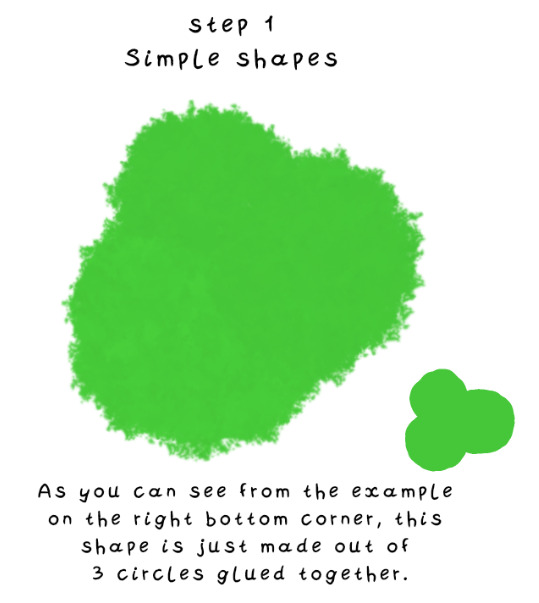
Btw, I just want to let you know that, as these brushes are still new, I still haven't used them to their full potential, as I had not time to explore what else I could do with them.
But I am positive that there are limitless other options. And I will be more than happy to share it with you guys as well! Heck, I am sure that most of you will do wonderful things with them!
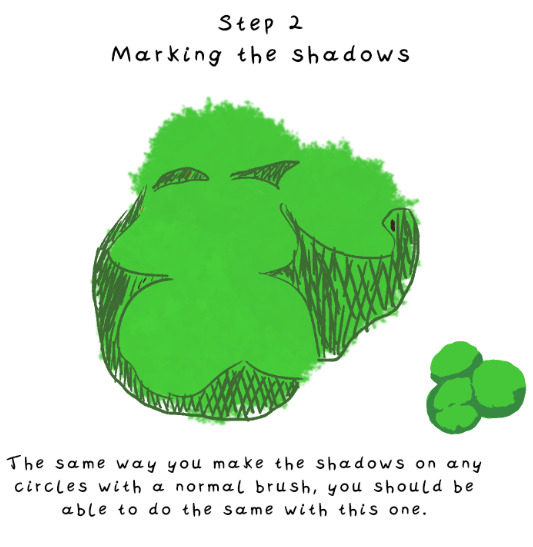
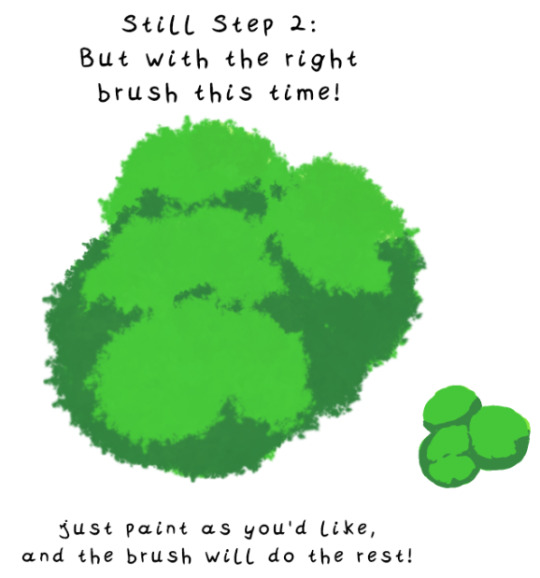


I feel like this was a little longer than it should be. I don't do this tutorial thing very often, so I try my best to find the best words to simplify the explanations that are provided above. If you have any questions, please feel free to ask, and I will do my best to answer them to the best of my ability!

Edit:
I realized that not everyone knows how to add the Layer Style, so I figured I'd add these here as well!
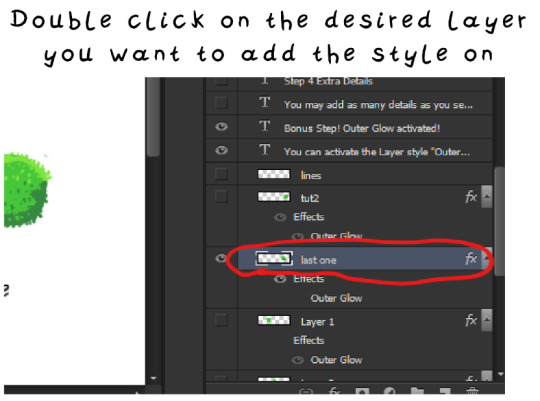


Once again, I just want to let you know that you can get the brushes in my shop on ✨Ko-fi ✨
#art#artist#illustration#tumblr art#artists on tumblr#drawing#draw#illustrators on tumblr#draws#shop#online shop#brush#brushes#tutorial#art tutorial#art tips#art help#art advice#art reference#drawing tips
82 notes
·
View notes
Text
Sometimes i scroll thru a bunch of hate comments on an insta post trying to find at least one person saying that all the hate is insane but instead i just feel like i'm the one who's gone mad
#so i saw a vid of a 4'10 (!!!!) girl talking ab jeans that drag on the floor and she keeps stepping on them!#and it was like supposed to be a short relatable vid to push for engagement/reach bc her entire account is outfit inspo and style advice for#short/petite girls and like#tell me why all the comments were making fun of her and calling her a pickme and a y/n and the whole ''ooo you're so special''#like ????? hello. am i insane. am i the one who's insane here.#why all that hate for a girl who's just trying to find other girls who would relate to that and who would then#follow her and give her posts engagement.... like ? hello ????#are you guys aware short girls actually exist and they do in fact find it difficult to shop for clothes bc a lot#of brands will make clothing in proportion and so if you need a smaller size for your height#everything else will be smaller too and sometimes we need to sacrifice those jeans hems so we can pull them over our hips💀💀#also someone straight up said they're hating bc she ''makes being petite her whole personality and that's all she posts ab''#!?!??!?!?!?!?! THE POINT OF HER ACC IS HOW TO STYLE FOR A PETITE FIGURE ?!?!?!!?!?!??!!??!?!
19 notes
·
View notes
Text
Prop Master: If you're trying to bet against water: Water Will Win.
#important advice for literally every situation honestly#theater#theatre#behind the scenes#theater tech#techblr#prop crew#props#the scene shop#scenic construction
28 notes
·
View notes